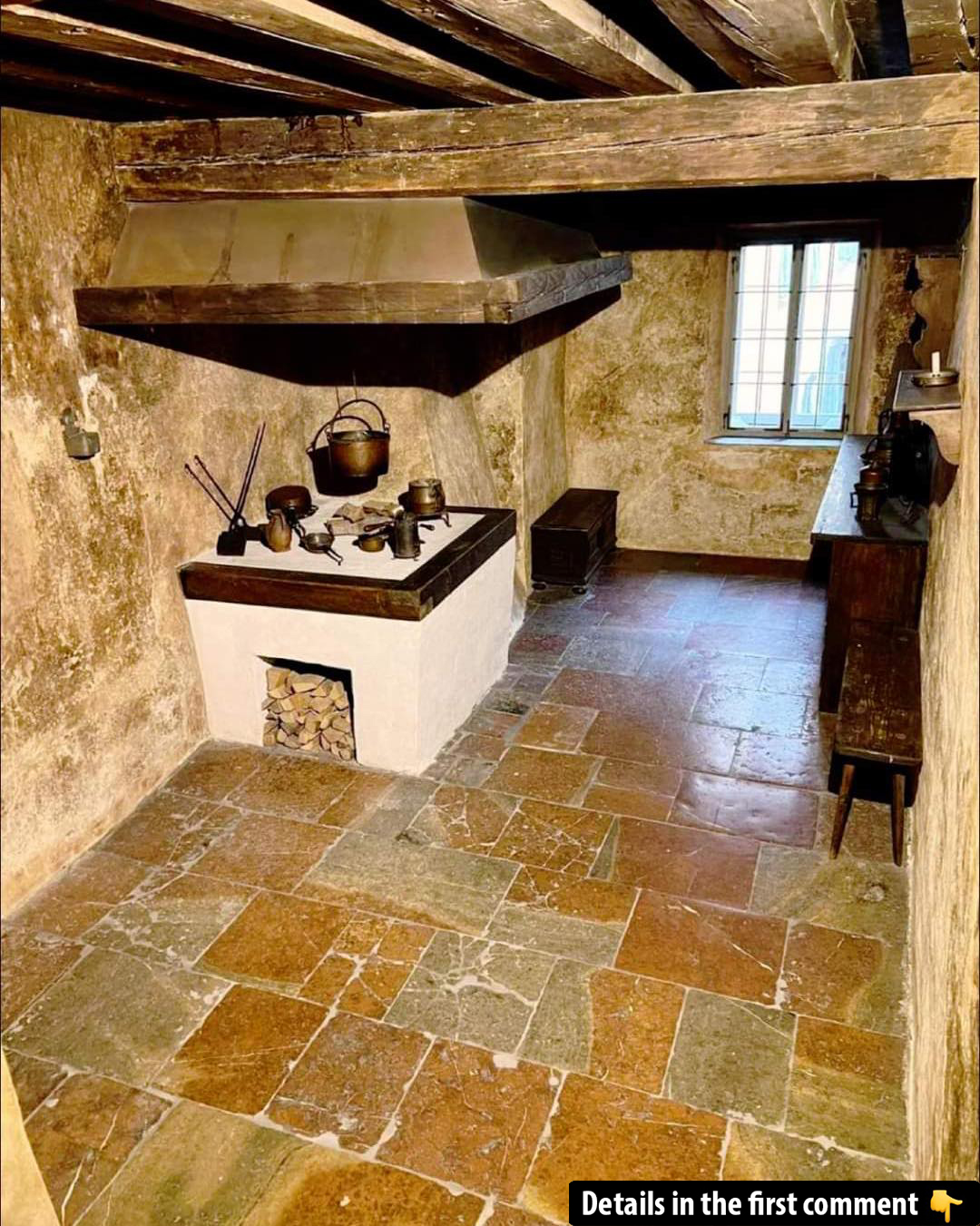Tucked away in the heart of Salzburg, the birthplace of Wolfgang Amadeus Mozart at No. 9 Getreidegasse holds secrets not only about his extraordinary musical genius but also about the everyday moments that shaped him. The humble kitchen, once a backdrop to his early life, offers a rare glimpse into the daily routines that nurtured a prodigy. Today, this unassuming space invites us to connect with the young Mozart, revealing the intimate setting where his genius first began to flourish.
Mozart’s Humble Beginnings
Although Mozart is now revered as one of the greatest musical geniuses the world has ever known, his early years were far from luxurious. Born on January 27, 1756, in the modest apartment of No. 9 Getreidegasse, Mozart grew up in a family that was neither wealthy nor powerful but respected within Salzburg’s musical circles. His father, Leopold Mozart, was a skilled composer and musician in the court of Salzburg. Despite their relatively modest financial standing, the Mozart family valued culture, music, and intellectual pursuits.

The apartment, where they lived from 1747 until 1773, was spacious enough to accommodate their needs but lacked the affluence one might expect from the family of a future musical icon. What is perhaps most remarkable about this home is the way it encapsulates Mozart’s early life, both as a son and a budding musical prodigy. This was not just the home of a genius, but of a family where music was embedded in the very fabric of daily existence.
Video
Tune into this video to take a tour of Mozart’s birthplace in Salzburg, including a fascinating look at the kitchen where the musical genius grew up.
The Kitchen as a Center of Family Life
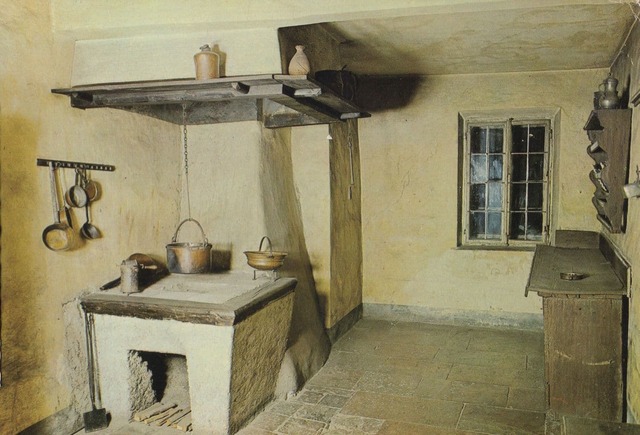
The kitchen at No. 9 Getreidegasse holds special significance, far beyond its humble role as a place for cooking. It was, in fact, the heart of the Mozart household. Kitchens in 18th-century Salzburg were the center of family life. Without modern conveniences like refrigerators or electric stoves, meals were often prepared over an open fire, and food had to be sourced from local markets or small gardens. The kitchen was a warm refuge from the cold winter days of Salzburg, offering a communal space where the family would gather, share meals, and, importantly, converse.
In a home where music permeated every aspect of life, the kitchen was no exception. While meals were being prepared, it is easy to imagine young Wolfgang sitting by the fire, perhaps listening to his mother, Anna Maria, as she went about her tasks, or his father, Leopold, discussing the finer points of composition with colleagues. This kitchen, simple in its design and use, would have provided the backdrop to countless hours of conversation, instruction, and musical exchange. The space fostered an environment where Mozart’s musical development was supported by both formal lessons and informal family interactions.
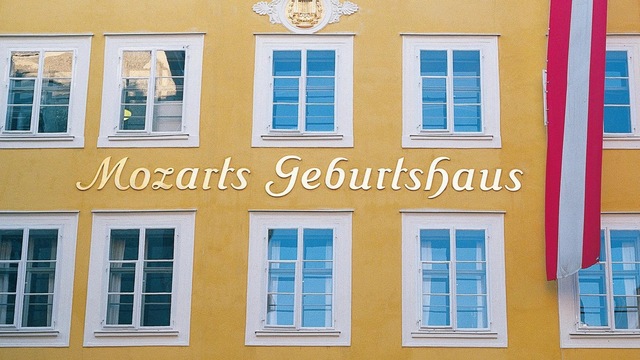
Wolfgang’s Early Musical Development
By the time he was three, Wolfgang Amadeus Mozart had already displayed a remarkable musical talent. His early exposure to music, primarily through his father, played a significant role in his development. Leopold, recognizing his son’s exceptional gifts, began giving him music lessons from an early age, teaching him not only to play instruments but also to compose music. Mozart’s musical talents were nurtured in this family environment, and the kitchen, as one of the most important gathering spaces, likely played a key role in this development.
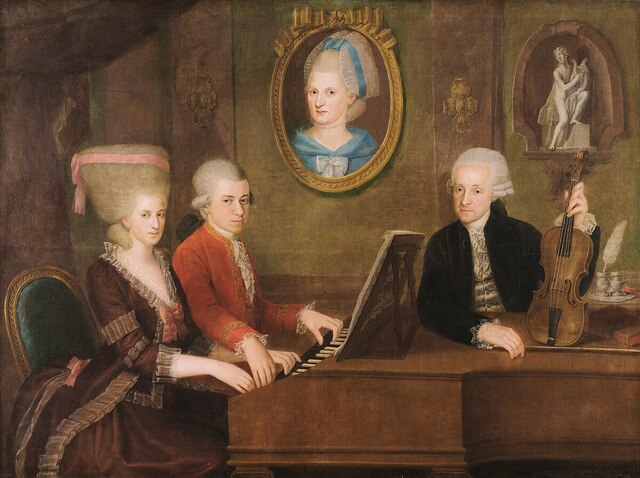
It is difficult to imagine the exact nature of Mozart’s childhood, but standing in the very kitchen where he grew up, one can easily picture him interacting with his family, absorbing the sounds of everyday life and the conversations that shaped his understanding of the world. Perhaps, as his sister Maria Anna (Nannerl) practiced her harpsichord, young Wolfgang would have been nearby, his mind already beginning to explore the rhythms and melodies that would define his musical genius.
The Transformation of Mozart’s Home into a Museum
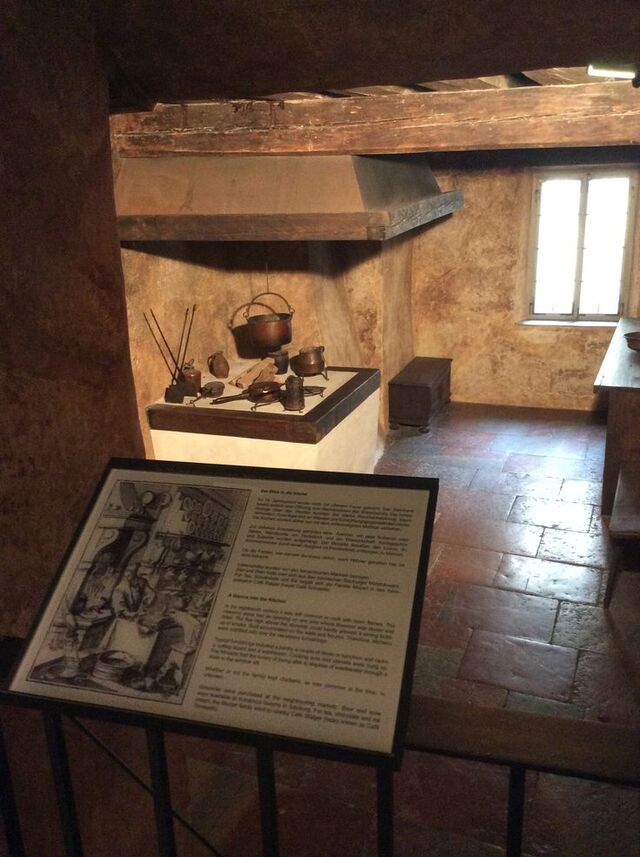
Today, No. 9 Getreidegasse stands as a museum, dedicated to the life and work of Wolfgang Amadeus Mozart. The building, which has been carefully preserved, allows visitors from around the world to walk through the rooms where Mozart once lived, including the famous kitchen. The museum offers a deeply immersive experience, transporting visitors back in time to an era when Mozart was just beginning his musical journey.
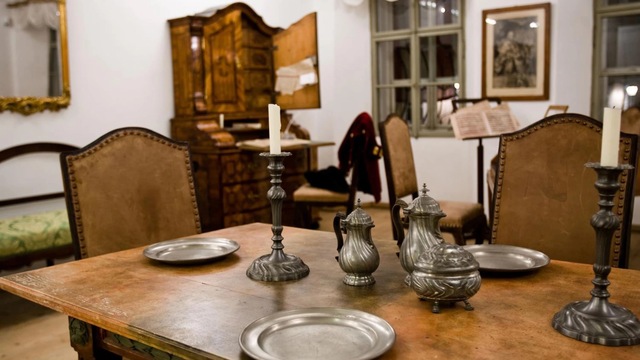
The museum’s exhibits are thoughtfully curated to showcase not just Mozart’s legacy as a composer but also the context in which his genius flourished. Visitors can explore rooms reconstructed to reflect the everyday life of the Mozart family, complete with furniture and items that would have been present during Wolfgang’s childhood. In the kitchen, visitors can imagine the bustling daily life of the household as they view the humble space where Mozart’s genius was fostered.
The Historical and Cultural Importance of Mozart’s Birthplace
No. 9 Getreidegasse holds deep cultural and historical significance. It is a pilgrimage site for music lovers, historians, and anyone fascinated by the life of Wolfgang Amadeus Mozart. The house stands as a testament to Mozart’s humble beginnings, a place where his extraordinary talent was nurtured by a loving family. It is a powerful reminder that greatness can emerge from modest circumstances, and that even the smallest, most intimate spaces can shape the course of history.
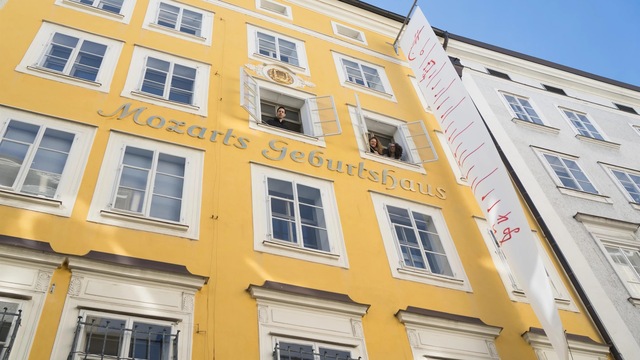
Mozart’s Personal Artifacts: A Window into His Life
One of the highlights of visiting Mozart’s birthplace is the collection of original documents, letters, and personal artifacts on display. These items provide a fascinating glimpse into the life of the composer, allowing visitors to experience his world firsthand. Among the museum’s treasures are portraits of Mozart, some painted during his lifetime, and instruments that he used, including his violin and clavichord.

These artifacts provide context to the music we know and love today. They show us the man behind the compositions, a genius who lived a complex and often challenging life. In this space, we are reminded that Mozart was not just a figurehead of musical history but a real person, living and working in the same space where countless others have come before and after him.

Interactive Experiences at the Museum
The museum’s interactive exhibits provide a unique and engaging way for visitors to connect with Mozart’s life and legacy. One of the museum’s most popular features is its “Historical Experience,” a theatrical tour that combines live actors and multimedia presentations to bring Mozart’s story to life. Visitors can hear his voice and the voices of others from his world as they move through the rooms, providing an immersive experience that is both educational and captivating.
The museum also offers guided tours through the original rooms of the house, where visitors can step into Mozart’s world and explore his early environment in greater depth. This is an opportunity to feel a personal connection to the composer and to understand the formative experiences that shaped his musical genius.
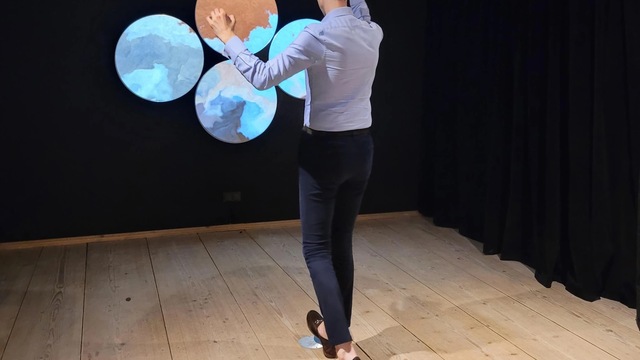
The Flying Notes Project: Celebrating Mozart’s Legacy
In 2024, the facade of Mozart’s birthplace became the canvas for an innovative art project titled “Flying Notes. K.265.” This public art installation, created by Salzburg artist Andreas Feldinger, showcases an excerpt from Mozart’s famous composition, “Ah, vous dirai-je Maman K.265,” better known as “Twinkle, Twinkle, Little Star.” The transparent, gleaming red notes that are projected across the building’s façade provide a dynamic visual display, bringing Mozart’s music to life in a new and exciting way.
The installation, visible only in certain lighting conditions, symbolizes the ongoing relevance and vibrancy of Mozart’s music, even centuries after his death. It’s a fitting tribute to the composer’s enduring legacy and a creative way to engage visitors with his work in a modern context.
Video
Check out this 4K HDR video to take an immersive tour of Mozart’s birthplace, uncovering the rich history and details of the legendary composer’s early life.
Conclusion: A Timeless Connection to Mozart’s Legacy
Visiting the kitchen at No. 9 Getreidegasse offers more than just a peek into the daily life of Wolfgang Amadeus Mozart’s family. It allows us to connect with the early influences that helped shape the genius who would forever change the world of music. The kitchen, though modest, is a poignant reminder that great talent can emerge from even the most humble of settings. Today, this space, along with the rest of the house, serves as a beacon to all who wish to understand the man behind the music and appreciate the profound impact his childhood home had on his future work.
Whether you are a devoted fan of Mozart or someone who simply appreciates the beauty of history, No. 9 Getreidegasse is a must-see destination. It offers a rare and intimate glimpse into the life of one of the world’s greatest musical prodigies, showing us that greatness is often born in quiet, everyday moments.
